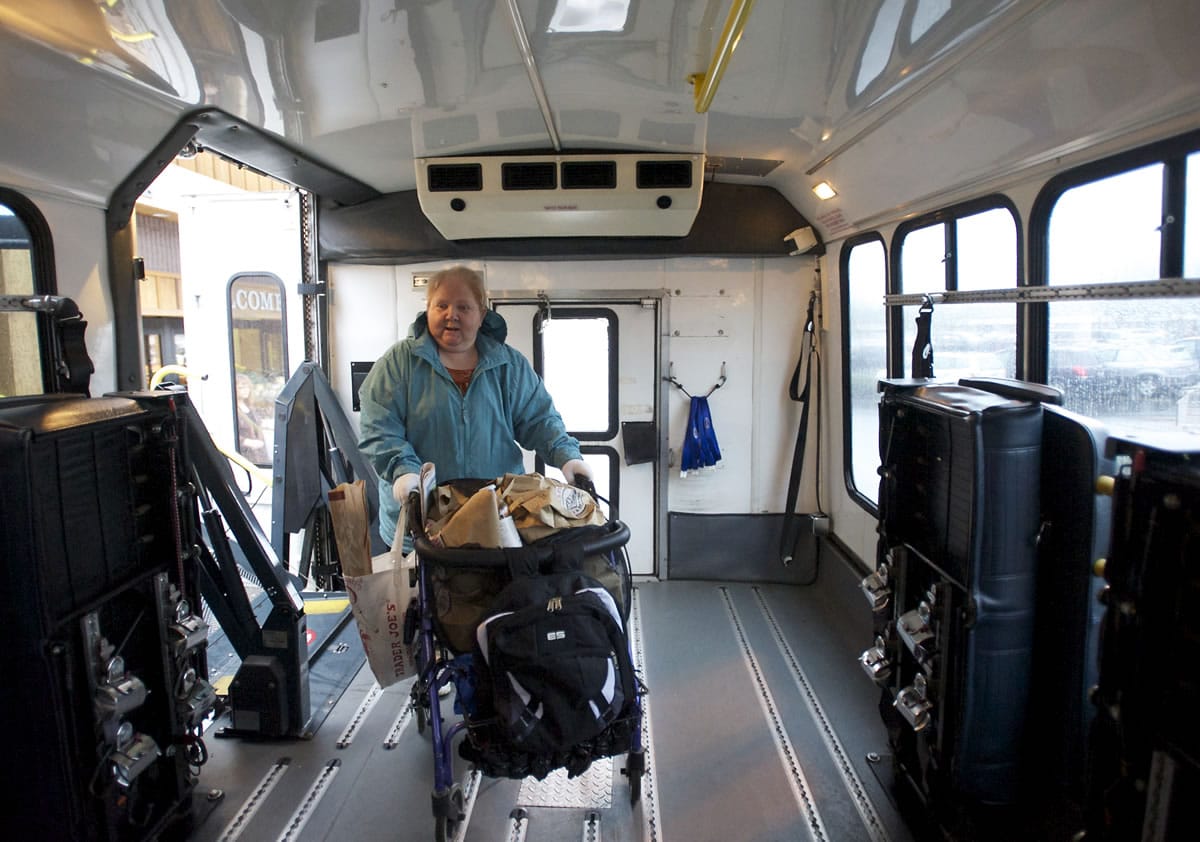After almost 10 years riding C-Van, Barbara Chu can’t imagine her life without it. The Vancouver resident uses C-Tran’s demand-based paratransit service for doctor appointments, grocery shopping and a host of other trips around the area.
“Without C-Van, I’d be homebound,” Chu said.
She’s not alone. Ridership on the point-to-point service for disabled people reached an all-time high in 2013. Chu, who has suffered two strokes and uses a wheelchair and walker to get around, is among those who use C-Van nearly every day.
The growth has put C-Tran in the unusual business position of expanding its most costly, least efficient service — which also happens to be mandated under federal law. The agency is hiring new drivers to keep up with demand, while looking for ways to tweak how C-Van operates.
The numbers suggest a difficult task. C-Van accounted for about 3 percent of C-Tran’s total passenger boardings in 2012, but more than 20 percent of its operating cost, according to C-Tran. Running C-Van costs the agency an average of $38.72 per passenger boarding, compared with $5.11 for fixed route bus service. In both cases, the regular single-ride fare paid by passengers is $1.70.
In 2013, C-Van carried an estimated 229,970 passenger trips, its most ever, said Walt Gordon, C-Tran’s passenger service manager. C-Van drivers are stretched thin, he said.
“We can’t say we’re at capacity,” Gordon said. “We might be at capacity, but we can’t say no.”
The paratransit service is required by the Americans with Disabilities Act of 1990. That means every eligible rider must be picked up and taken to where he or she wants to go. C-Tran initially hired an outside provider before launching its own version in 1999.
C-Van’s reach includes anywhere that’s within three quarters of a mile of a regular bus route. Riders call one or two days in advance to schedule a ride. They can’t request a same-day trip. But they can make a standing reservation such as a trip to church every Sunday morning, for example.
Though it essentially travels door to door, Gordon noted that C-Van is a shared service. C-Tran does its best to schedule rides together when possible, he said, which may mean a less-than-direct route to a rider’s destination. Passengers are usually given a 30-minute window for pickup rather than an exact time.
Because it’s scheduled on a day-by-day basis, C-Van demand can vary wildly, Gordon said. C-Van carries about 700 to 750 trips on a typical weekday, but some days tops 1,000, he said. Drivers routinely work overtime and split shifts to make it work, spending up to 10 hours on the road in a day, he said.
“When you’re going 10 hours a day, five days a week, six days a week,” Gordon said, “that’s a lot of hours.”
C-Van has a fleet of 53 vehicles and 59 drivers. Five more drivers are in training, Gordon said. An increase in the paratransit budget is among the financial requests being asked of the C-Tran Board of Directors at its regular meeting this Tuesday.
C-Tran convened an ADA Task Force recently to examine its paratransit service. A “Travel Training” program encourages C-Van riders who are able to use a fixed route bus when they can.
Chu acknowledged riding C-Van requires some degree of flexibility. But the value is worth it, she said. Chu described the drivers she travels with as “like family.”
Adding drivers is more about meeting demand than anything, Gordon said. C-Van operates with an on-time rate of more than 98 percent, he said.
“This is a group that depends upon us, and we want to make sure the quality is always there,” Gordon said.




